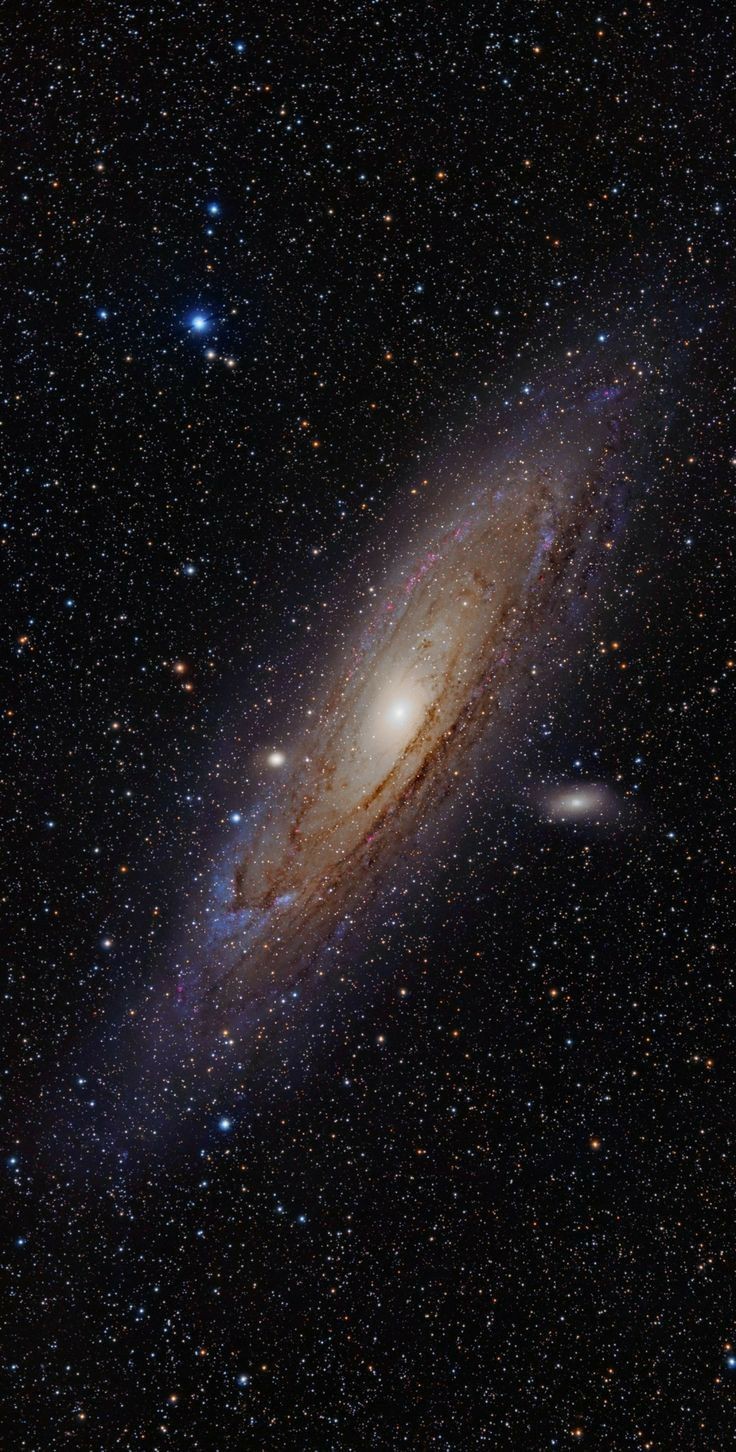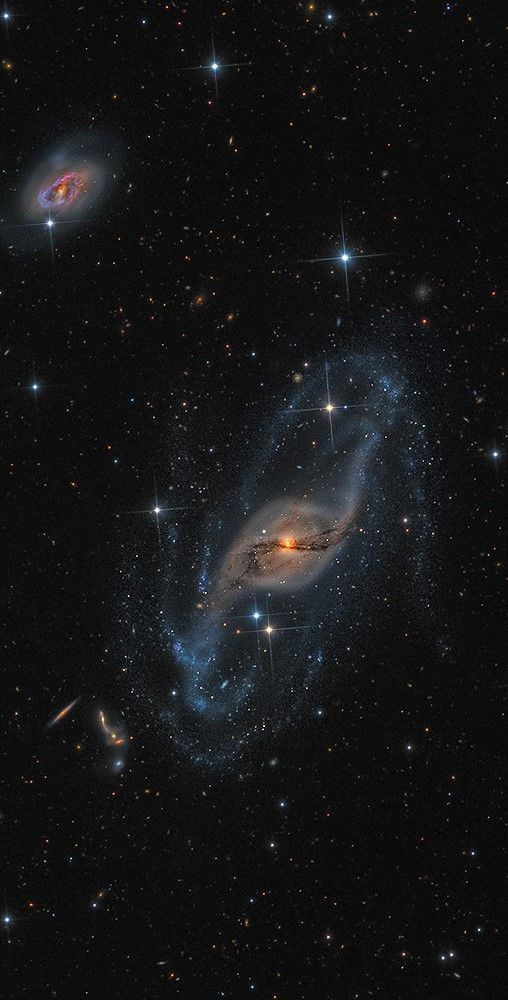Cosmic Cliffs In Carina © JWST

Cosmic Cliffs in Carina © JWST
More Posts from Ad-astra-affecte-spe and Others



Boo! Did we get you? 🎃
This solar jack-o-lantern, captured by our Solar Dynamics Observatory (SDO) in October 2014, gets its ghoulish grin from active regions on the Sun, which emit more light and energy than the surrounding dark areas. Active regions are markers of an intense and complex set of magnetic fields hovering in the sun’s atmosphere.
The SDO has kept an unblinking eye on the Sun since 2010, recording phenomena like solar flares and coronal loops. It measures the Sun’s interior, atmosphere, magnetic field, and energy output, helping us understand our nearest star.
Grab the high-resolution version here.
Make sure to follow us on Tumblr for your regular dose of space!

A hexagonal storm with a diameter of 25,000 km raging at the north pole of Saturn.

November 12, 1980: Voyager 1 made its closest approach to Saturn, flying within 124,000 kilometers (77,000 miles) of the ringed planet.

2023 September 28
The Deep Lagoon Image Credit & Copyright: Josep Drudis, Christian Sasse
Explanation: Ridges of glowing interstellar gas and dark dust clouds inhabit the turbulent, cosmic depths of the Lagoon Nebula. Also known as M8, The bright star forming region is about 5,000 light-years distant. It makes for a popular stop on telescopic tours of the constellation Sagittarius toward the center of our Milky Way Galaxy. Dominated by the telltale red emission of ionized hydrogen atoms recombining with stripped electrons, this deep telescopic view of the Lagoon’s central reaches is about 40 light-years across. The bright hourglass shape near the center of the frame is gas ionized and sculpted by energetic radiation and extreme stellar winds from a massive young star.
∞ Source: apod.nasa.gov/apod/ap230928.html

M78 // Capturing Ancient Photons
A beautiful series of reflection nebulae make up M78. These reflection nebulae, like their name suggests, contain little ionized gas and primarily reflect the light of nearby stars. In this case, it is only two stars' light that the gas is reflecting despite containing a few hundred young stars within.






Saturn in near-infrared

Earth as seen through Saturn's ring(Cassini)


With giant storms, powerful winds, auroras, and extreme temperature and pressure conditions, Jupiter has a lot going on. Now, NASA’s James Webb Space Telescope has captured new images of the planet. Webb’s Jupiter observations will give scientists even more clues to Jupiter’s inner life.
Credit: NASA, ESA, CSA, Jupiter ERS Team; image processing by Judy Schmidt. Read more
-
 bohoviolet reblogged this · 1 month ago
bohoviolet reblogged this · 1 month ago -
 rottenmenace reblogged this · 3 months ago
rottenmenace reblogged this · 3 months ago -
 masonthewitch liked this · 4 months ago
masonthewitch liked this · 4 months ago -
 kombuchacorture reblogged this · 7 months ago
kombuchacorture reblogged this · 7 months ago -
 alfhildr-the-word-weaver liked this · 11 months ago
alfhildr-the-word-weaver liked this · 11 months ago -
 xlovexpotionx liked this · 11 months ago
xlovexpotionx liked this · 11 months ago -
 condensed-ink liked this · 1 year ago
condensed-ink liked this · 1 year ago -
 betterplacestobe reblogged this · 1 year ago
betterplacestobe reblogged this · 1 year ago -
 miawlabakim liked this · 1 year ago
miawlabakim liked this · 1 year ago -
 bi-hans liked this · 1 year ago
bi-hans liked this · 1 year ago -
 housekittysden reblogged this · 1 year ago
housekittysden reblogged this · 1 year ago -
 housekittysden liked this · 1 year ago
housekittysden liked this · 1 year ago -
 vicissitudeislove liked this · 1 year ago
vicissitudeislove liked this · 1 year ago -
 franco-x liked this · 1 year ago
franco-x liked this · 1 year ago -
 goldenaelak reblogged this · 1 year ago
goldenaelak reblogged this · 1 year ago -
 constellationsearcher reblogged this · 1 year ago
constellationsearcher reblogged this · 1 year ago -
 cacabirdtweet liked this · 1 year ago
cacabirdtweet liked this · 1 year ago -
 andysorbit reblogged this · 1 year ago
andysorbit reblogged this · 1 year ago -
 goldenaelak liked this · 1 year ago
goldenaelak liked this · 1 year ago -
 meli140611 liked this · 1 year ago
meli140611 liked this · 1 year ago -
 bocere liked this · 1 year ago
bocere liked this · 1 year ago -
 problematicsavage reblogged this · 1 year ago
problematicsavage reblogged this · 1 year ago -
 omghellolovely reblogged this · 1 year ago
omghellolovely reblogged this · 1 year ago -
 appleciderdoughnut reblogged this · 1 year ago
appleciderdoughnut reblogged this · 1 year ago -
 madwomanwithawarehouse liked this · 1 year ago
madwomanwithawarehouse liked this · 1 year ago -
 sarahsoph reblogged this · 1 year ago
sarahsoph reblogged this · 1 year ago -
 sarahsoph liked this · 1 year ago
sarahsoph liked this · 1 year ago -
 ad-astra-affecte-spe reblogged this · 1 year ago
ad-astra-affecte-spe reblogged this · 1 year ago -
 parksandsparks reblogged this · 1 year ago
parksandsparks reblogged this · 1 year ago -
 plasmabear reblogged this · 1 year ago
plasmabear reblogged this · 1 year ago -
 plasmabear liked this · 1 year ago
plasmabear liked this · 1 year ago -
 croatoanpiano liked this · 1 year ago
croatoanpiano liked this · 1 year ago -
 finchgerald reblogged this · 1 year ago
finchgerald reblogged this · 1 year ago -
 finchgerald liked this · 1 year ago
finchgerald liked this · 1 year ago -
 cinderellasfella reblogged this · 1 year ago
cinderellasfella reblogged this · 1 year ago -
 littlethingwithfeathers reblogged this · 1 year ago
littlethingwithfeathers reblogged this · 1 year ago -
 littlethingwithfeathers liked this · 1 year ago
littlethingwithfeathers liked this · 1 year ago -
 whatelsecanwedonow reblogged this · 1 year ago
whatelsecanwedonow reblogged this · 1 year ago -
 whatelsecanwedonow liked this · 1 year ago
whatelsecanwedonow liked this · 1 year ago -
 stairwaytotijuana liked this · 1 year ago
stairwaytotijuana liked this · 1 year ago -
 claudiajcregg reblogged this · 1 year ago
claudiajcregg reblogged this · 1 year ago -
 tlaco liked this · 1 year ago
tlaco liked this · 1 year ago -
 itsgerges reblogged this · 1 year ago
itsgerges reblogged this · 1 year ago -
 itsgerges liked this · 1 year ago
itsgerges liked this · 1 year ago -
 lookslikeaquentinblakedrawing liked this · 1 year ago
lookslikeaquentinblakedrawing liked this · 1 year ago -
 sheliesshattered reblogged this · 1 year ago
sheliesshattered reblogged this · 1 year ago

★•Astronomy, Physics, and Aerospace•★ Original and Reblogged Content curated by a NASA Solar System Ambassador
204 posts
